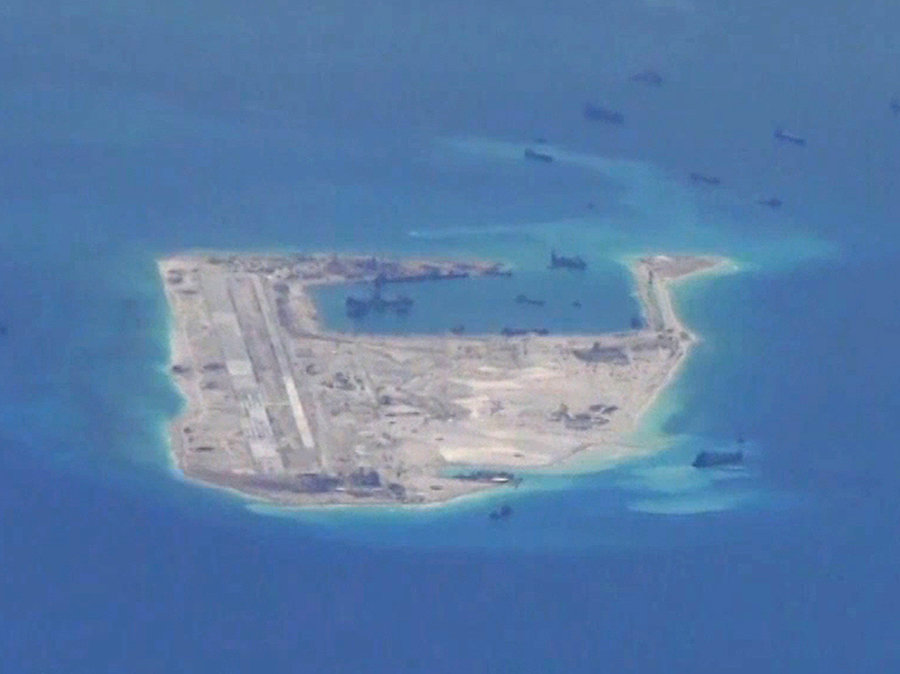U.S. Navy continues build-up in South China Sea as they ‘stalk’ manmade Chinese islands
07/12/2016 / By usafeaturesmedia

(NationalSecurity.news) The Pentagon appears to be quietly building up naval forces in the region of the South China Sea, both as a means of demonstrating to China that it aims to ensure freedom of navigation in the area and as a bulwark against future aggression by Beijing in advance of an international court ruling.
As reported by Navy Times, U.S. Navy destroyers have been stalking some of the China’s manmade islans and claims in recent weeks ahead of a ruling by an international court in The Hague regarding contested claims in the South China Sea that is expected to go against China.
In the past two weeks destroyers USS Stethem, USS Spruance, and USS Momsen have all patrolled near Chinese-claimed atolls and features at Scarborough Shoal and in the Spratly Islands, say defense officials.
“We have been regularly patrolling within the 14 to 20 nautical mile range of these features,” one official, who asked for anonymity to discuss diplomatically-sensitive operations, told Navy Times.
The distance in nautical miles is significant because if the ships patrolled within the 12-mile international limit, the Navy would be handling them as “freedom of navigation” patrols asserting the U.S. right to sail in waters claimed by other nations. Those kinds of patrols must be approved at the very highest levels of government.
“Patrols by U.S. Navy destroyers like Spruance, Momsen and Stethem — as well as the USS Ronald Reagan Carrier Strike Group — are part of our regular and routine presence throughout the western Pacific. U.S. Navy forces have flown, sailed and operated in this region for decades and will continue to do so,” said Lt. Clint Ramsden, a spokesman for the Pacific Fleet.
One Navy official said that the service had at least seven warships including Reagan, two cruisers and four destroyers, a Navy official said. The Virginia-class submarine Mississippi is also patrolling in the western Pacific.
As further reported by Navy Times:
The heavy show of Navy hardware in the South China Sea, which includes a carrier air wing and hundreds of missile tubes on the destroyers and cruisers, is likely part of both the Navy’s continuing presence operations in the area and an anticipation of the international Permanent Court of Arbitration’s ruling on the legality of China’s claims in the South China Sea, said Jerry Hendrix, an analyst with the Center for a New American Security.
The Philippines brought China to court after its 2012 seizure of Scarborough Shoal, which is located within the 200-mile exclusive economic zone of the Philippines. Chinese vessels have been spotted surveying the area, activity that was a precursor to previous island-building projects; no construction is believed to have been started to date.
China currently claims almost all of the South China Sea as its territorial waters.
“The Navy is trying to very strongly assert freedom of navigation and freedom of the seas,” said Hendrix, who is a retired Navy captain. “There is also, I think, some anticipation of The Hague’s ruling on China’s claims.
“I anticipate that China will take additional actions after the Hague tribunal, and I think there is a desire to show that after that happens there is not going to be a ramp-up of U.S. forces in the region: that they are already there,” he added.
More:
- China’s Continued Military Build Up On Contested Islands In South China Sea Is Boosting Risk Of Conflict
- Are We In For A Long Summer Of Discontent In The South China Sea?
- Report: China Sends High-Tech Missiles To Contested Island In South China Sea
NationalSecurity.news is part of the USA Features Media network. Get caught up on ALL of the day’s most important news and information here.
Tagged Under: China, international court, South China Sea





















